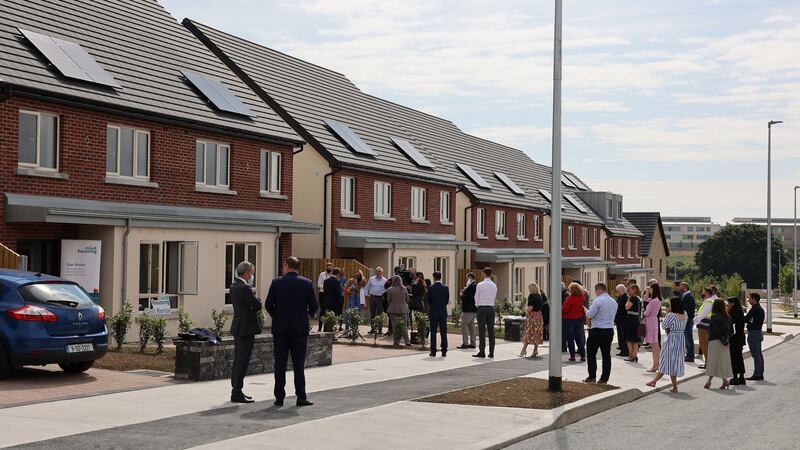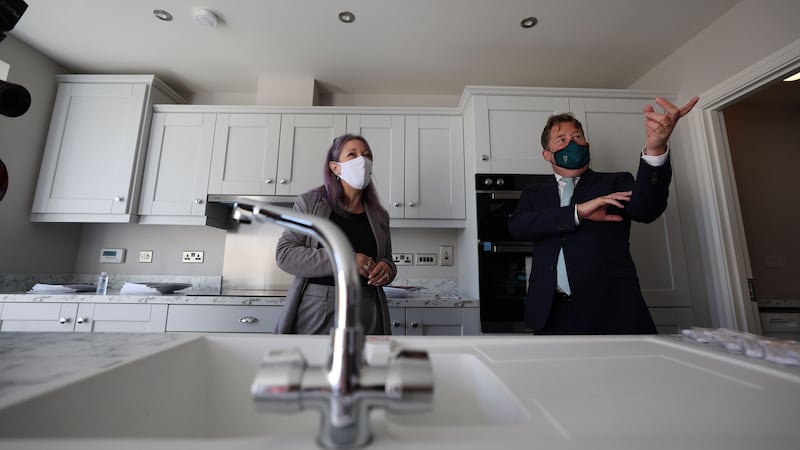By the end of this decade, low- and middle-income workers who have struggled to afford rents demanded in the private rental sector, will have 18,000 “cost-rental” homes available to them, according to the Government’s Housing for All plan.
Cost-rental refers to a system where rents are based on the cost of building, managing and maintaining the homes, and not market rates. It also offers security of tenure with leases of several years duration available to qualifying tenants.
The scheme is aimed at workers who earn too much to qualify for social housing supports, but who cannot afford to buy or rent on the open market, and is currently open to households with an income of up to €82,273 a year. Up to now this group has been caught in a rent trap.

Applications for the first 25 cost-rental homes in Balbriggan opened in July and within one week more than 1,000 people had applied
The options in Ireland have essentially been limited to renting from a private landlord – which offered little in the way of security of tenure, or protection from rent hikes – or renting social housing. However, eligibility for social housing has tightened significantly over the decades to people either entirely reliant on State supports, or earning very low incomes, and certainly those earning around the €82,000 mark would not qualify.
Cost-rental was first proposed in October 2015 and was due to be introduced as a pilot as part of Budget 2016 funded by the sale of Bord Gáis, but it is only this year the first cost rental homes have become available.
Even setting that delay aside, in terms of hitting targets set this year, the Government is already some way wide of the mark. Some 390 cost rental homes were to have been provided this year, less than a third of that number have been completed.
For next year a target of 750 has been set, with the Government hoping the scheme will ramp up swiftly to an average of 2,000, particularly when the Land Development Agency, the main designated driver of cost rental, gets into its stride.

However, while the targets may be shaky, the popularity of cost rental certainly isn’t.
Applications for the first 25 cost-rental homes in Balbriggan, Dublin, at rents of between €935 and €1,150 a month, opened in July and within one week more than 1,000 people had applied.
The homes are owned and managed by housing association Clúid, whose former head of policy the late Simon Brooke was to the forefront of campaigning for this new form of tenure.
Clúid has already moved on to its second cost-rental estate, with the first residents moving into Barnhall in Leixlip, Co Kildare earlier this month, and more in the pipeline in Cork next year.
Another important element of Clúid's cost rental programme is that it should deliver new homes, to avoid competing with first-time buyers
“We are very committed to cost rental, and feel over time it will become a very important element of the overall housing system,” Fiona Cormican, Clúid’s new business director says.
“A lot of people can’t manage to accommodate themselves – they don’t qualify for social housing but they can’t afford the market – so they’re caught in the middle.”
This is a particular problem in Ireland where only people who are unemployed or on very low incomes can apply for social housing.
“We have an absolute income threshold for social housing that they don’t have in other European countries, where anyone can apply for social housing, and your income will determine how much you pay. You may get 10 per cent of your housing needs met, or 60 or 70 per cent.”

Another important element of Clúid’s cost rental programme is that it should deliver new homes, to avoid competing with first-time buyers. This, however, has meant battling rising construction costs, she says.
“The biggest challenge is the rising cost of delivering homes, particularly apartments. We have a real need for one and two beds, and they are invariably going to be apartments not houses, and we are saying to lenders that we want to develop high quality, and that means high cost, but we don’t want to charge high rents.”
Clúid does have access to the Government’s Cost Rental Equity Loan which covers 30 per cent of the capital costs, but she says there can be no compromise on quality, as this is vital to build trust with tenants that cost rental is a good long term option. It’s also important cost rental is delivered along with social housing, to achieve the mix that other countries reach though wider access to state supported housing.
“What is really important is that we develop mixed tenure schemes – social and cost rental. We need to destigmatise social housing. The service we deliver is exactly the same for both. We are providing homes for the long term, providing security of tenure. They are designed in the same way, the same high BER [Building Energy Rating], and high quality and very importantly in areas where people want to live.”
While up to now Clúid has principally been involved in the provision of social housing, cost rental is likely to become a significant part of its offering, she says. “We have about 9,000 properties in ownership or management. About 10 to 20 per cent [of our stock] in the future could be cost rental”.



















